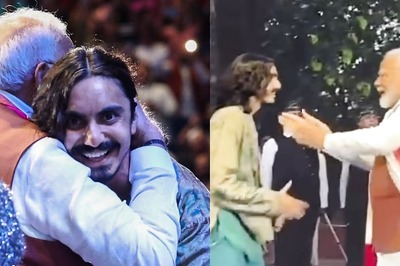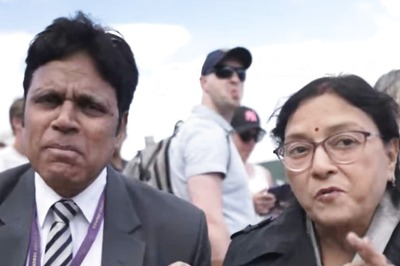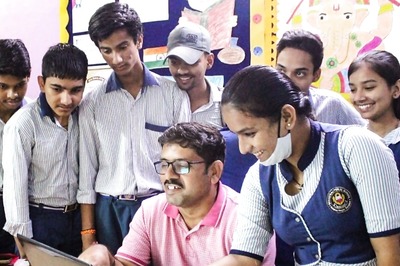
views
The preamble of the Indian Constitution prioritises justice social, economic, and political above all other basic structures. Yet, the grim reality of India’s judicial system often belies this ideal, as illustrated in Shishir Tripathi’s compelling book, Stalled Wheels of Justice. Tripathi, drawing from his extensive experience as a court reporter, delves into the deep-seated issues that plague the Indian judiciary, offering an insightful critique of a system that frequently fails its citizens.
We all know that the justice has been a central focus of political philosophy, serving as the foundational framework around which various theories such as those concerning the state, rights, and freedom are constructed. From Plato to John Rawls, and from Amartya Sen to Michael J. Sandel, philosophers and theorists have continuously explored the concept of justice.
Tripathi’s book is not just a critique but also a call to action. He argues that for India to achieve its vision of becoming a developed nation by 2047, it must revolutionise its judiciary with technology, integrity, and a commitment to delivering swift justice.
The book is divided into seven chapters, preceded by an incisive prologue at the beginning and resourceful references at the end, each focusing on critical aspects of the justice system.
Chapter 1, “Justice Delayed, Denied”, addresses the pervasive issue of delays in dispensing justice and examines the underlying reasons, arguing that it is unjust to place the entire blame on the judiciary. Chapter 2, “Heavy Cost of Justice”, explores the significant barrier that financial costs pose to accessing justice, highlighting the disparity between the wealthy and those living in poverty. Supported by numerous studies and data, this chapter demonstrates how the exorbitant legal expenses impose a severe economic burden on ordinary individuals.
Chapter 3, “Misuse of Law, Travesty of Justice”, illuminates the misuse of certain laws, while Chapter 4, “Infrastructure Woes”, delves into the complexities of judicial infrastructure, identifying roadblocks and potential solutions.
Chapter 5, “Right to Legal Aid”, underscores the fundamental importance of the right to legal counsel and adequate representation as the cornerstone of a fair trial. Chapter 6, “Public Interest Litigation”, discusses the pivotal role of PILs in securing justice for marginalised groups and addressing crucial social, political, economic, and environmental issues. However, it also acknowledges that rampant misuse has damaged its credibility.
Finally, Chapter 7, “The Hope: Alternative Dispute Redressal”, provides an in-depth analysis of the legal logjam affecting both the demand and supply sides of the justice system, highlighting the potential of alternative dispute resolution mechanisms to alleviate these pressures.
Tripathi’s narrative is enriched by his first-hand observations and extensive research, making the book both informative and deeply engaging. He reveals the systemic inefficiencies and bureaucratic hurdles that cause justice to grind to a halt, and how these failures disproportionately affect the underprivileged.
The legal maxim “Justice delayed is justice denied” is central to Tripathi’s narrative, highlighting the unbearable delays that undermine the very essence of justice. He brings to light cases like that of a humble postman accused of stealing a mere 57 rupees and 60 paise, and a poor bus conductor charged with misappropriating 5 paise, who both endured legal battles lasting 29 and 41 years, respectively. These examples starkly demonstrate how prolonged legal processes can become a punishment in themselves, stripping away the essence of justice and rendering any eventual judgement nearly meaningless.
The author highlights the need for modern courtrooms, efficient judicial processes, and a motivated legal fraternity. He emphasises that piled-up case files, vacant judicial positions, and inadequate infrastructure must not define a “nation on the move”.
While reading we find the that one of the book’s major strengths is its accessible writing style. Tripathi avoids heavy legal jargon, making complex judicial issues understandable for the general reader. His use of real-life stories adds a layer of emotional depth, illustrating the profound impact of judicial delays on ordinary citizens. This approach not only informs but also evokes empathy and a sense of urgency for reform.
In the book the author also examines historical and international contexts, drawing parallels with legal systems worldwide. He reflects on the right to speedy justice as enshrined in documents like the Magna Carta and the U.S. Constitution and highlights similar guarantees in modern international human rights frameworks. This broader perspective reinforces the universality of the issues at hand and underscores the need for India to align its judiciary with global standards.
The book also raises critical questions about the nature of justice and the distinction between a legal judgement and true justice. Tripathi convincingly argues that without fairness and accessibility, judicial processes cannot achieve real justice. He precisely offers practical suggestions for reform, including increasing budgetary allocations for the judiciary, improving infrastructure, and embracing alternative dispute resolution mechanisms like Lok Adalats.
This book is a must-read for anyone interested in understanding the intricacies and challenges of the Indian judicial system. The author’s insightful and profound analysis and art of natural storytelling make it not just an academic critique but also a call for meaningful change. It highlights the urgent need for a judicial system that is not only efficient but also fair and accessible to all.
One of the most remarkable aspects of Stalled Wheels of Justice is that it goes beyond mere legal commentary to present a human story of denied justice and delayed relief. By illuminating these issues, Tripathi significantly contributes to the vital conversation about justice in India, making this book an essential read for policymakers, legal professionals, and concerned citizens alike.
The book, ‘Stalled Wheels of Justice’ (Rs 499), by Shishir Tripathi is published by BluOne Ink.
(Ashutosh Kumar Thakur is a Bangalore-based management professional, literary critic, and co-director with Kalinga Literary Festival. Views expressed are personal)




















Comments
0 comment